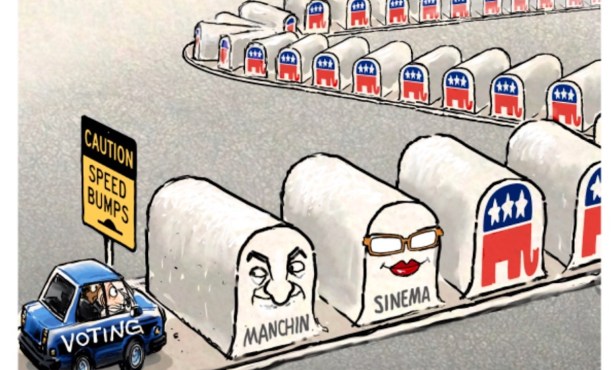Climate Change Requires a New Look at Development
Will Water Exist for New 64,000-Square-Foot Rental Project?
The Planning Commission’s recent hearing on the proposed 64,000-square-foot development, which could go as high as four stories, for downtown Santa Barbara (at East Anapamu and Garden) did not focus on water availability as a permitting criterion at the July 19 hearing. This is a lot like the ostrich putting its head in the sand rather than watching for impending danger.
Clearly, there is a case to be made that the project does not fit the neighborhood. Potentially adding more than 100 new residents along with the increased traffic are strong arguments against it. Projected rents, which could be more than $3,000 a month, would disqualify low- and even middle-income residents. And, there is the nightmare of having to stack cars on elevators to meet planning regulations. However, what should be the overriding issues for permitting new development, climate change and resulting drought, were not considered.
Climate change is a game changer. Drought is one of its characteristics. Santa Barbara has been living through climate-induced drought and on-and-off water restrictions for more than five years. In June, the state Drought Monitor upgraded our status to severe drought despite last winter’s heavy rains. The last four years were the hottest ever recorded in Southern California, including in Santa Barbara; with 2017 being the hottest and driest ever. Multiple excessive heat watches have been issued for Santa Barbara County (and city) this summer including record-breaking triple digit temperatures, with climate scientists predicting drought as the “new normal” for our region.
It would be negligent for the Planning Commission not to consider water availability in considering this and future projects. Santa Barbara’s water supply is tenuous and shrinking. Lake Cachuma, the main source of our water (79%) is only 39 percent full with no real relief in sight. Planners talk about relying on imported water for as much as 35 percent of our supply. This, at best, is wishful thinking. Our imported water comes from two increasingly unreliable and contested sources: the State Water Project (Sierra Snowpack) and the Colorado River. The Snowpack is again at record lows, with cities, farmers, and environmentalist all fighting over available water. Looking to the Colorado River as a source of imported water is equally equivocal. The Colorado watershed is suffering its own drought with seven states, including California and Mexico, fighting over deliveries.
Santa Barbara groundwater is of poor quality and always threatened by seawater intrusion. Purchasing water depends on it being available. While Santa Barbarians are conserving water, it is not nearly enough to make up for climate-induced drought. And, the Charles E Meyer Desalination Plant, which provides 30 percent of our water, should not be used to justify new development. It is a much needed hedge against drought. We live in a semi-arid environment now stressed by continual drought. Climate has changed our reality: It’s hotter and drier, and there is less available water. This is the new context for considering development in Santa Barbara. Perhaps the Planning Commission will take this into consideration when it continues the hearing on September 6.



